The sight of an endangered black rhino nursing is not something I ever expected to see. But one special night while camping in Etosha, Namibia changed all that.
I had seen white rhinos before but this was my first time seeing the rare and reclusive black rhino. To make it even more exciting, there was a third rhino at the scene prompting a lot of interesting rhino behavior. We even got to hears some bizarre black rhino vocalizations!
It was our second to last night at Etosha National Park in Namibia and we were spending the last two days camping at Okaukuejo. If you are familiar with Etosha, you know that this is probably the most famous waterhole in Namibia. It is set on one side of the campground that goes by the same name and it is floodlit at night. Visitors sit on the benches surrounding the waterhole 24 hours a day and watch the wildlife spectacle.
During our various visits to Okaukuejo we have seen hundreds of zebras, hyenas, elephants, giraffes, black-backed jackals, lions, rhinos, and various antelopes. You really don’t need to go on a game drive, you can just sit by the waterhole and enjoy. But even with this never-ending parade of wildlife visitors, I never thought I would witness a black rhino nursing.
Related: How to tell the difference between black and white rhino
Wildlife Parade at the Waterhole in Etosha
That night, our wildlife watching at Okaukuejo started with a big herd of elephants. To sit so close to a family of elephants at night while they enjoy the waterhole is magic. There are no sounds (people are normally very well-behaved and sit there in silence) except for elephant rumbles. Elephant rumbles have the power to soothe anyone.
Then the elephant group left, leaving the waterhole empty for the next visitor. A lion with two tiny cubs came for a quick drink. It was adorable! We could even hear the cubs cute attempts at roaring. It sounded more like a house cat with a raspy voice meowing. The night couldn’t get any better, right?
Baby Rhino Nursing
Then a rhino and her calf arrived. The calf wasn’t small but it always kept very close to mom (black rhino calves stay with their mother for 2-4 years). They hung out at the waterhole shore, drinking a little bit, and not doing much, just standing around. Until the rhino calf got closer to mom and moved into a strange position. It knelt down flat to the ground and nuzzled its snout into the base of her back leg. At first we weren’t sure what was going on. In humans the mammary glands are up on the chest. But in rhinos, we later learned, the two nipples are tucked into the groin area. It’s a similar arrangement to a cow (except cows have four teats). In today’s world, the vision of a wild rhino nursing is one of hope. Hope that the rhino poaching will stop before all the rhinos disappear from the wild. Hope that many baby rhinos will be born and live a long life in the wild. Hope that this little one standing in front of us will manage to raise its own calf one day.
The incredible sight of this rhino nursing made all the tourists smile, sigh, and I bet one or two were holding happy tears!
This incredibly sweet scene was broken by the appearance of a third black rhino. Rhinos have bad eyesight and it seemed like this third rhino didn’t see the mom and calf until the mom uttered a horrifying cry, something that could only be translated as “get any closer to my baby and I’ll stomp on you!”. The third rhino got freaked out, started dancing around in the water trying to locate the mom and calf, and made an equally loud scream. I really don’t know how to describe the rhino calls we heard. We called it the “monster scream” (only because the first time we heard this sound it was night time and we were in our tent, so it seemed a pretty freaking scary sound for a couple of city-living people!). It is somewhat like a blood-curdling shriek.
This back and forth of different vocalizations ended when mom and the calf decided to leave the waterhole and disappeared into the night.
The third rhino just stood there, in the water, looking into the void. It seemed like he stayed in the water forever but he eventually left, and a group of giraffes took his spot.
Black Rhino Facts
Black rhinos (Diceros bicornis) are highly endangered. Today, there are less than 5,ooo black rhinos in the wild, and this number is constantly decreasing as rhino poaching increases and also because viable rhino habitat is lost every year.
In South Africa alone, rhino poaching (black, and white rhino) has gone from 13 deaths in 2007 to 1214 poaching deaths in 2015 (source WWF).
While white rhinos are grazers (grass eaters) black rhinos are nearly pure browsers (leaf and twig eaters). They prefer a diet of leguminous herbs and shrubs, eating over 200 plants in 50 different families. By chewing on succulents they can go without drinking 4 to 5 days but they may travel up to 15 miles every day for a drink. Their upper lip is triangular in shape (almost like a beak) and is used as a flexible grasping tool.
How to Tell the Difference Between a Black Rhino And a White Rhino
It’s all in the lips. Black rhinos have a pointy prehensile upper lip that enables them to browse selectively. White rhinos have square lips and a wide flat mouth that is adapted to grazing on grass. It makes them very efficient lawn-mowers. In fact, many believe the name White Rhino is really a mis-translation of what early dutch settlers used to call it: the Wide Rhino (or wijd in dutch). There really is very little difference in color between the black and white rhino, so if you’re having trouble remembering which is which, think of it as the wide (mouthed) rhino instead of the white rhino!
For more info on rhinos and how to help, please visit Save The Rhino Trust Namibia and Save The Rhino.

Cristina Garcia
Zoologist and wildlife photographer. She has worked in the field with jackals, wolves, cheetahs, & leopards. She serves on the Board of Directors of SEE Turtles, a non-profit sea turtle conservation organization.
Read her posts at Travel For Wildlife and see more of her work at Truly Wild, & Our Wild Yard.

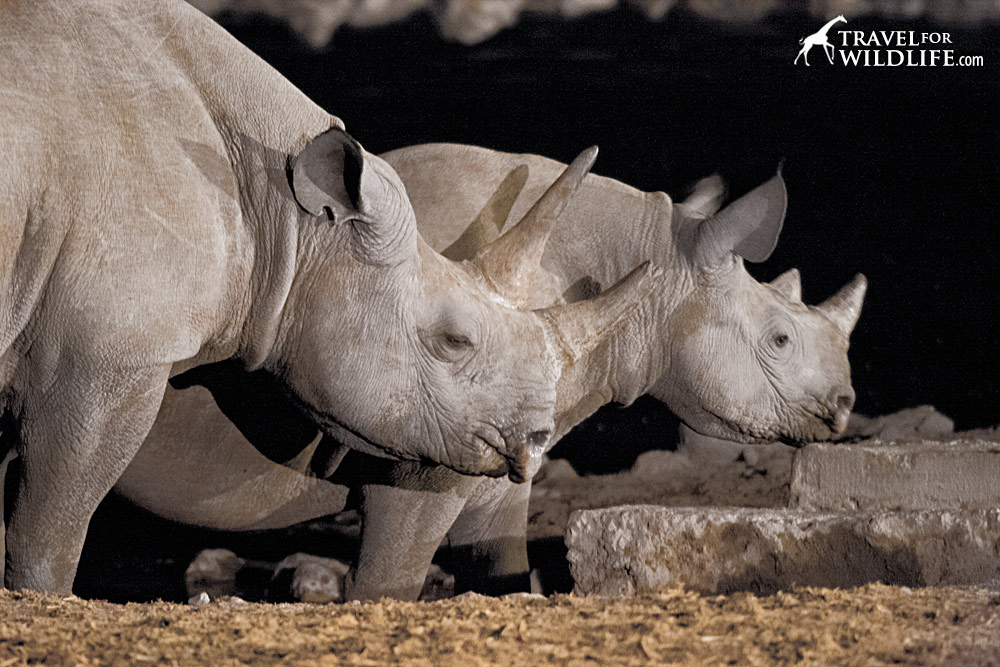
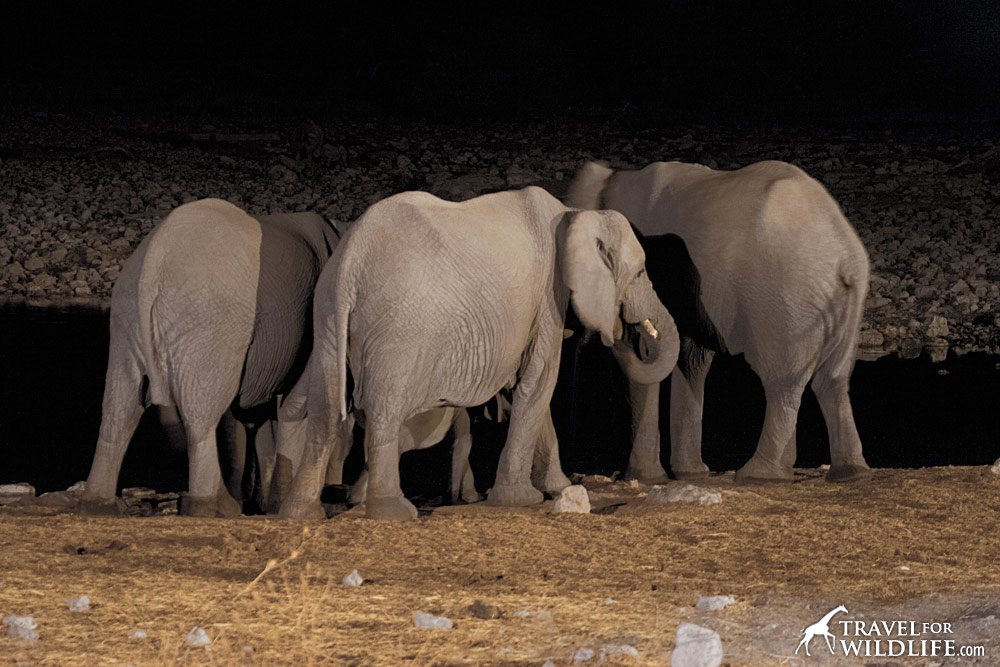
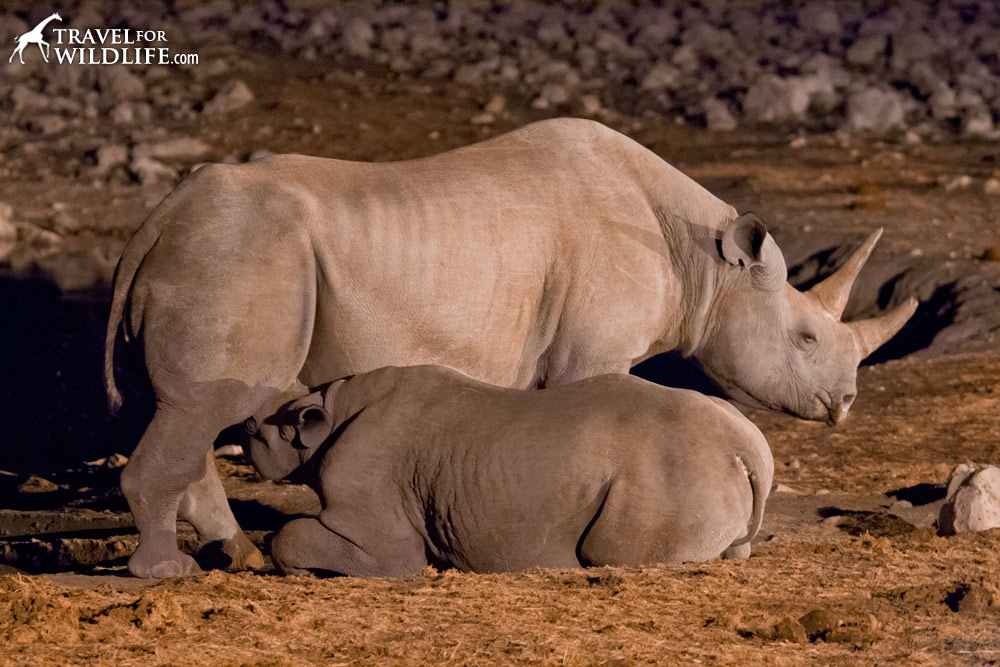
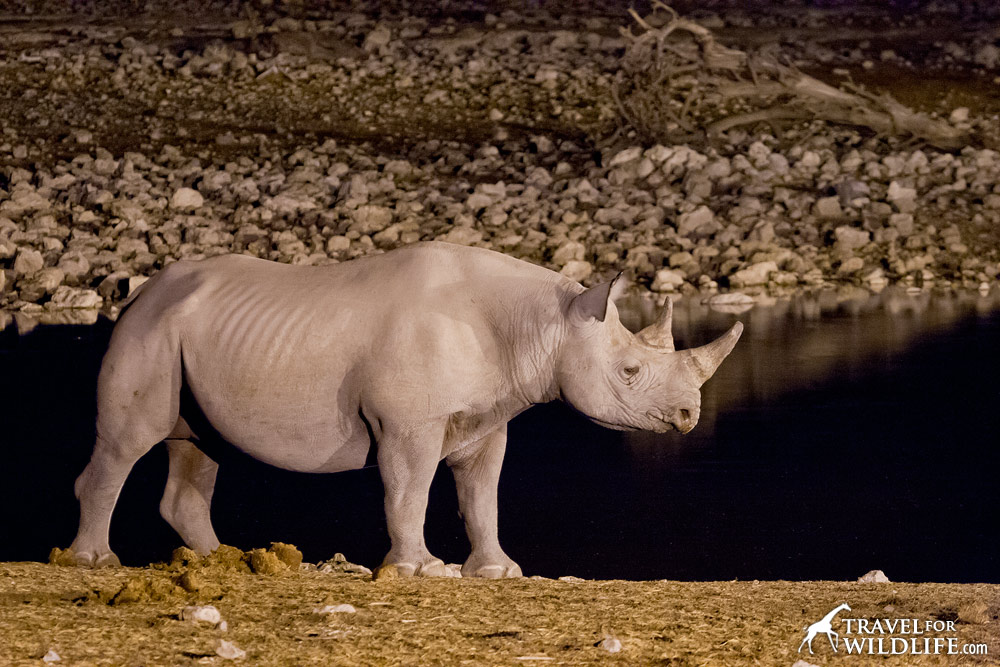
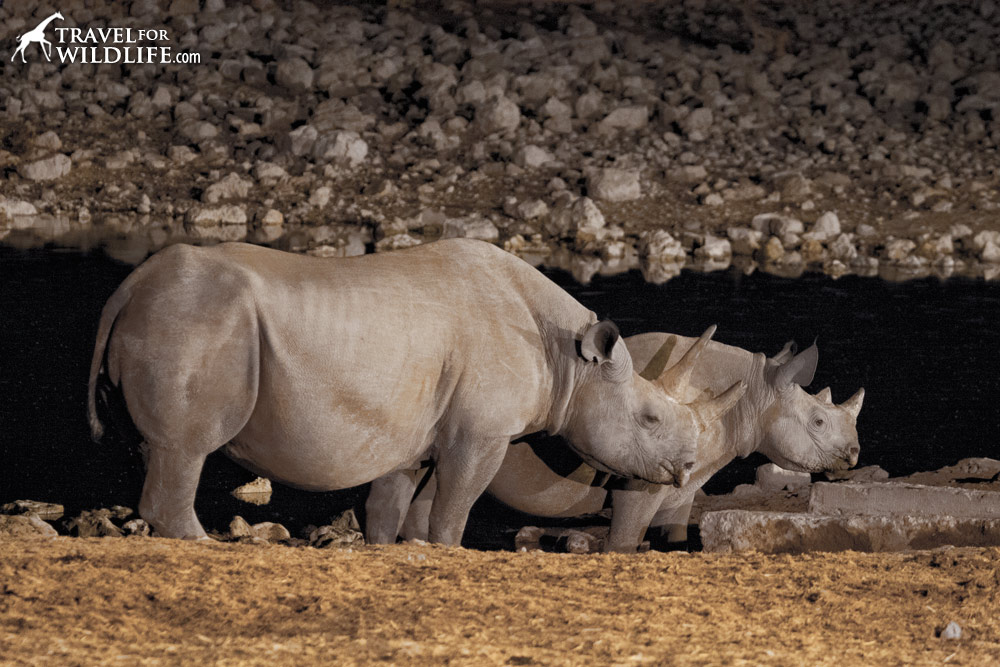
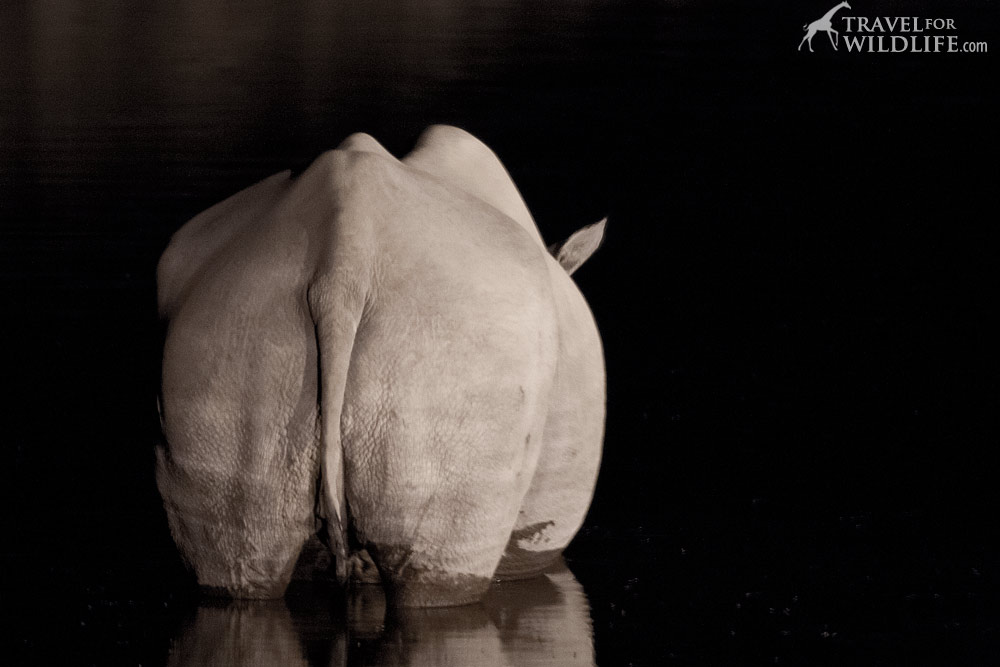
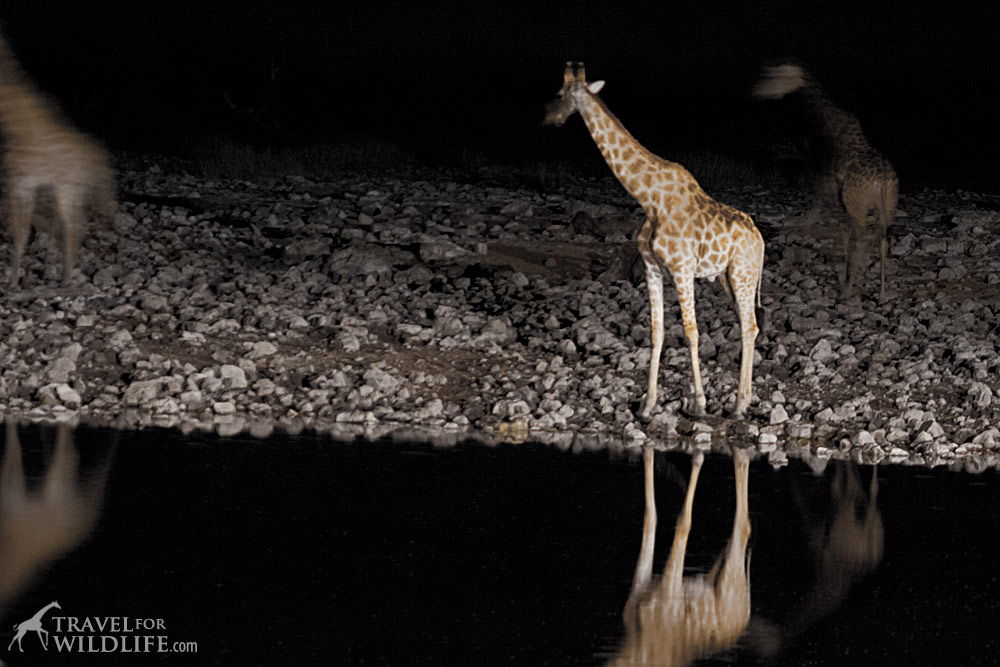
Carl Wright
Sunday 10th of January 2016
What an incredible thing to witness. I was not aware that some watering holes are floodlighted at night. Wildlife would come to you, it gives me goosebumps imagining what it must be like and observe the interaction like when the 3rd rhino arrived.
Such GREAT photos. Thanks for sharing! :)
cristina garcia
Sunday 10th of January 2016
Thanks Carl! Yes, the waterholes that are located at the rest camps are floodlit at night so visitors can see the nocturnal animals. That night was definitely one of the best nights we've ever had at that waterhole. Absolutely fantastic.